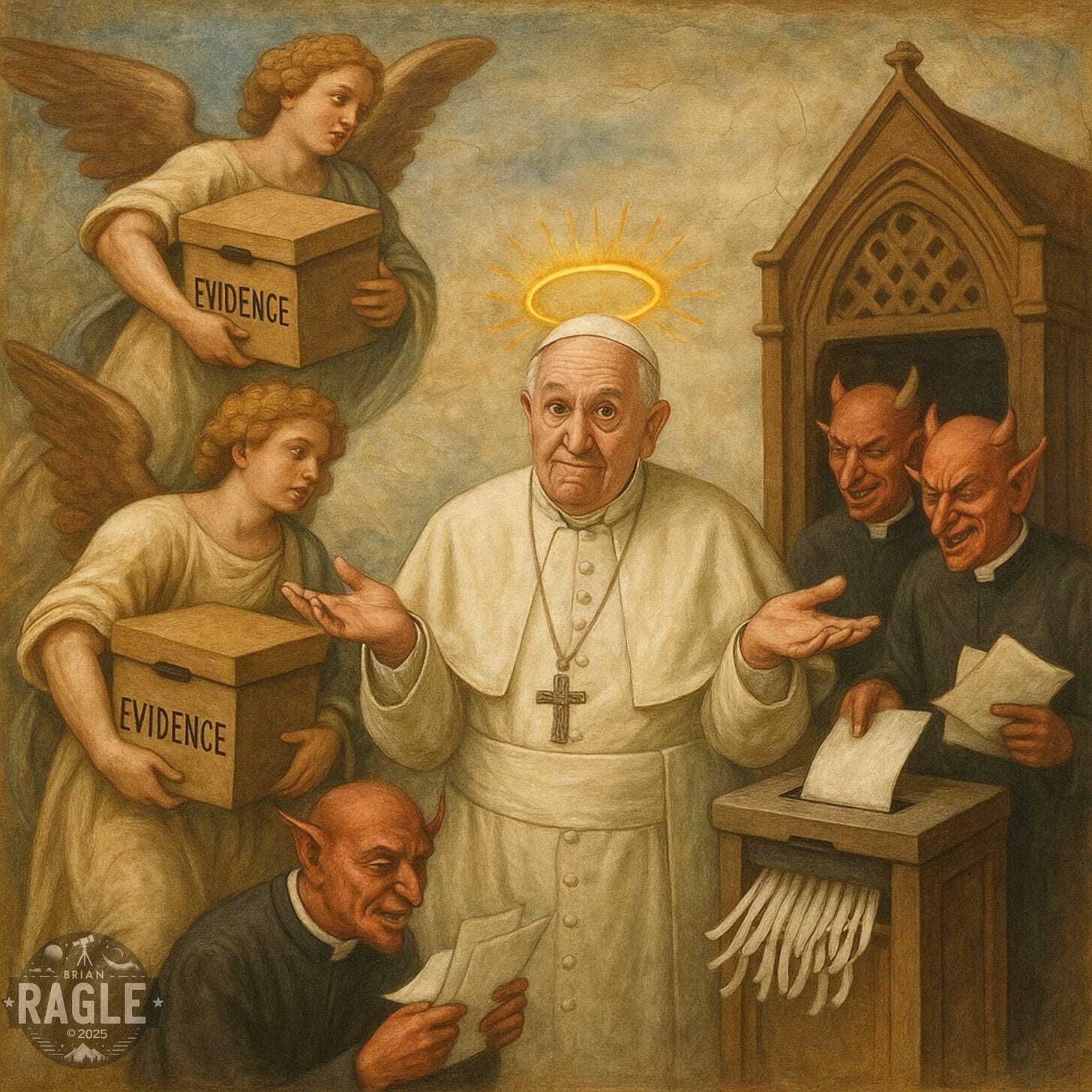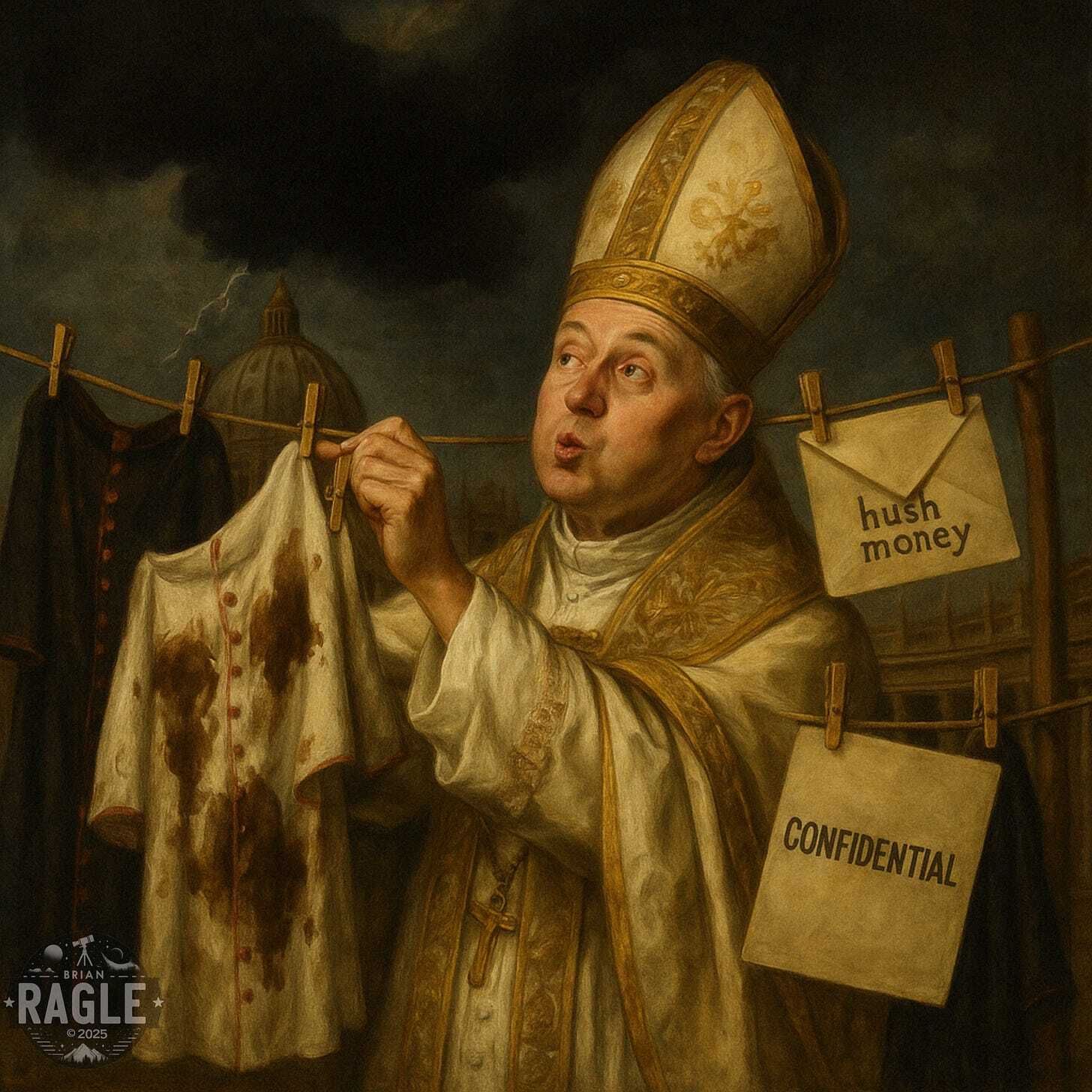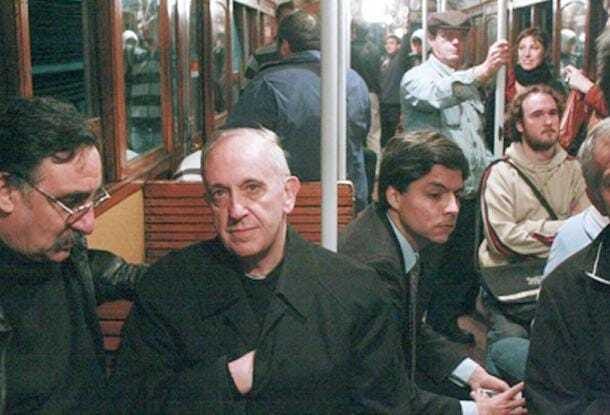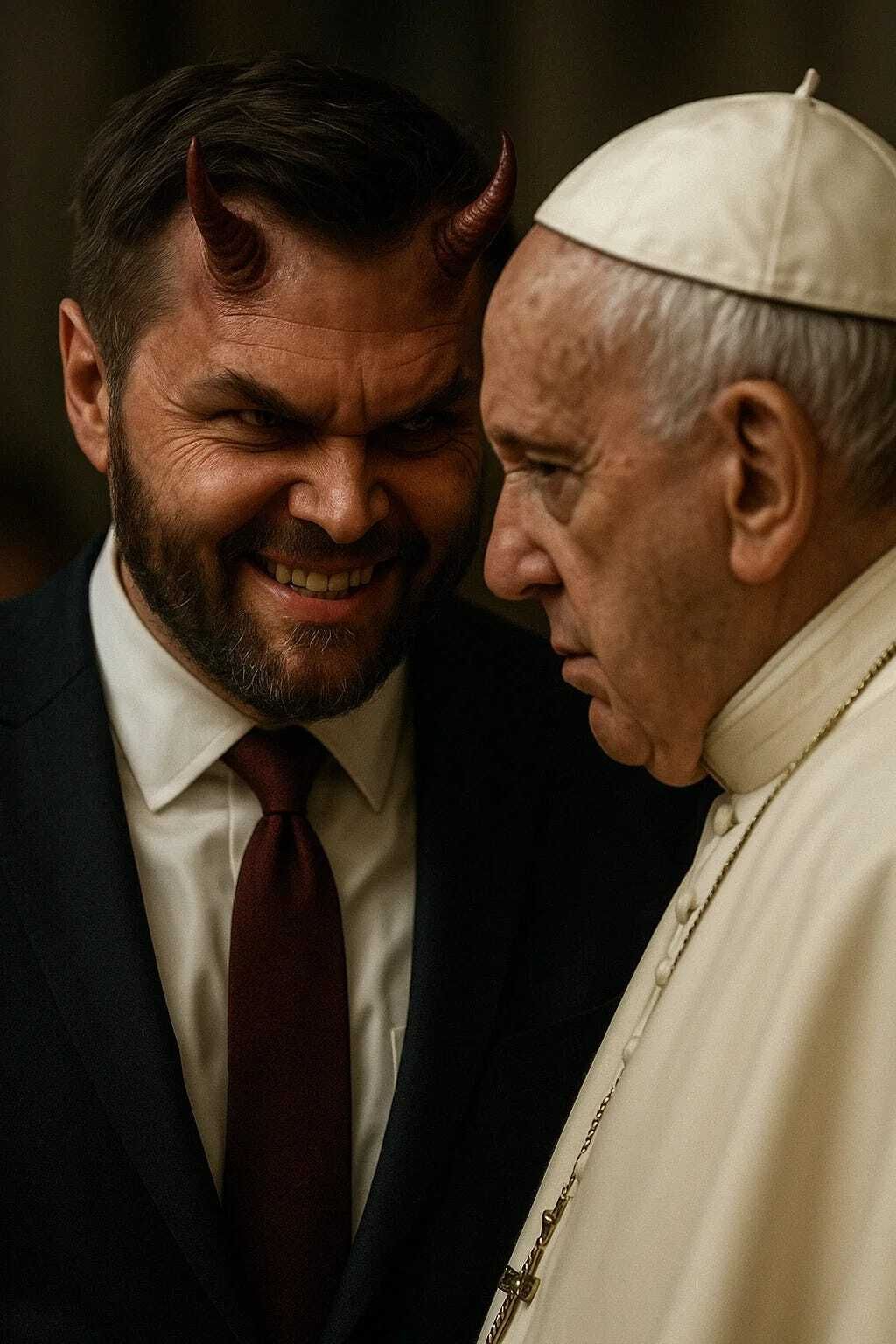
Pope Francis died yesterday morning at the age of 88. And while Frankie wore the mask of a kindly reformer and tweeted out eco-friendly prayers, he still sat at the helm of the largest, longest-running child sex abuse syndicate in recorded history. Let’s be clear: Francis didn’t create this hellscape, but he didn’t fix it, either.
A Legacy of Pious PR
From the moment he stepped onto that Vatican balcony, Francis was cast as the Hip Pope™. He washed prisoners’ feet! He took selfies! He called capitalism mean!
But when it came to the Church’s vast, centuries-spanning network of abuse, he offered band-aids on a gaping, septic wound. Survivors and historians agree: the reforms were cosmetic, the culture of secrecy remained, and the Vatican was more interested in managing headlines than delivering justice (WaPo).
This Didn’t Start in Boston
Clerical abuse wasn’t a 20th-century moral whoopsie—it’s been rotting in the Church’s DNA for over a millennium. Back in the 11th century, Pope Leo IX was already dealing with rampant sexual corruption in monastic orders (America Magazine). Fast-forward a few hundred years and we’ve got historical records of bishops, cardinals, and entire religious orders either participating in or covering up sexual exploitation—especially of minors and vulnerable women.
This isn’t ancient history. It’s current events with better costumes.
Pope Francis: Good Intentions, Rotten Institution
Francis knew the Church’s future depended on trust. He convened a 2019 abuse summit, released new policies, and even lifted the “pontifical secret” for abuse investigations. Sounds great, right? Until you realize:
None of this required cooperation with civil law enforcement.
Bishops continued to shield predators.
Survivors were still silenced with hush money and NDAs.
A 2018 paper in Child Abuse & Neglect lays it out starkly: “This is not just a crisis of abuse—it is a crisis of institutional betrayal” (NCBI).
Francis may have cried for the victims, but he also allowed Cardinal Pell to return to high office after sex abuse allegations. He downplayed the accusations against Chilean bishops until public outcry forced a reckoning. And he never really cleaned house—he just sprayed some holy Febreze over the stink.
The Church of Don’t Ask, Don’t Tell
The real scandal isn’t that Catholic priests raped children. The real scandal is that the Church knew…and still protected them. Across continents and centuries, victims were gaslit, witnesses were threatened, abusers were relocated, and files were shredded. From Ireland to Australia to Argentina, it was the same playbook.
Historian Massimo Faggioli said it best: the abuse crisis is the Church’s “biggest threat in 500 years” (NCR). And still, the Vatican tiptoed around real reform like a priest at a Girl Scout campout.

Post-Mortem Reflections
Francis was arguably the best Pope we’ve had in modern times—which says more about the office than the man. He cracked open a few windows. But the rot was in the foundation. And when the Church’s legacy is written, it won’t be about Francis’s tweets or climate encyclicals.
It will be about how he presided over an empire of spiritual trauma and systemic abuse, and still left it mostly intact.

P.S.
Oh, and let’s not ignore the very curious timing here: Pope Francis died immediately after his first-ever meeting with Assistant to the Manager and accidental Vatican plague rat, J.D. Vance (Jimmy Bowman). Now, I’m not saying Vance’s presence killed the Pope, but let’s just say if you mix Appalachian theobro nationalism with 2,000 years of ecclesiastical guilt, something’s gonna give. Coincidence? Maybe. Or maybe God finally looked down and said, “You know what? That’s enough.”
